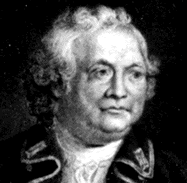| Israel Putnam  Born: 7-Jan-1718 Born: 7-Jan-1718
Birthplace: Danvers, MA
Died: 29-May-1790
Location of death: Brooklyn, CT
Cause of death: unspecified
Remains: Buried, Putnam Monument, Brooklyn, CT
Gender: Male
Religion: Christian
Race or Ethnicity: White
Sexual orientation: Straight
Occupation: Military Nationality: United States
Executive summary: Revolutionary War general Military service: Continental Army (Maj. Gen.) The American soldier Israel Putnam was born in Salem Village (now Danvers), Massachusetts, on the 7th of January 1718. His first American ancestor (of the same family as George Puttenham), came from Aston Abbotts, Bucks, and was one of the first settlers of Salem Village. In 1740 he removed to a farm in the present townships of Pomfret and Brooklyn, Connecticut. Here in the winter of 1742-1743 he went down into a wolf den (still shown in Pomfret) and at close quarters killed a huge wolf. Putnam took an active part in the French and Indian War, enlisting as a private in 1755 and rising to the rank of major in March 1758. He was conspicuous for personal courage and for skill in Indian warfare, and was the hero of numerous exploits. In 1764, during Pontiac's conspiracy, he commanded the Connecticut troops (five companies) in the expedition under Colonel John Bradstreet for the relief of Detroit. He was a prominent member of the Sons of Liberty and a leader in the opposition to the Stamp Act; was elected to the general assembly of Connecticut in 1766 and 1767; and increased his political influence by opening a tavern, "The General Wolfe", in Brooklyn, CT. In August 1774, as chairman of the committee of correspondence for Brooklyn parish, he went with the committee's message and contributions to the Boston Patriots; and in October became lieutenant-colonel of the 11th regiment of Connecticut militia. News of the fighting at Lexington and Concord reached him while he was plowing on his farm; he instantly left the plow in the furrow and hastened to Cambridge; and he was later made second brigadier of the Connecticut forces. He was with the force, commanded by Colonel William Prescott, which on the night of the 16th of June fortified Breed's Hill, and on the next day he took a conspicuous part in resisting the British attack, called the Battle of Bunker Hill. Soon afterward, on his own authority, he occupied Prospect Hill, an important point for the siege of Boston, in which he commanded the center (two brigades) of the American army at Cambridge. After the evacuation of Boston he was in command of New York City until George Washington's arrival (April 13, 1776), and then was put in general charge of the city's fortifications. Immediately before the battle of Long Island he succeeded General John Sullivan in command of the troops on Brooklyn Heights, and in the battle of Long Island (of Aug. 27) he was in immediate command of the American side. In the retreat from New York City he commanded one of the three grand divisions, and took part in the battle of Harlem Heights (September 16). His attempt to close the Hudson by sinking vessels in the channel was unsuccessful. In December he was ordered to Philadelphia to superintend the fortification of the city, was stationed at Princeton, New Jersey, from January to May 1777, and in May took command of the Hudson Highlands at Peekskill, which with Forts Montgomery and Clinton he abandoned in October, being out-maneuvered by the British, and having been weakened by Washington's repeated demands for reinforcements. In the spring of 1778 he was superseded by General Alexander McDougall, but in April a court of inquiry acquitted him of "any fault, misconduct or negligence" in connection with the loss of Forts Montgomery and Clinton. After a few months' recruiting service in Connecticut he returned to the main army at White Plains. In the winter of 1778-79 he commanded the troops quartered near Redding, CT, where Putnam Memorial Park now is. In May he took command of the right wing on the west side of the Hudson. An attack of paralysis in December 1779 terminated his active service in the war. He spent his last years on his farm in Brooklyn, CT, where he died on the 29th of May 1790. A bronze equestrian statue by Karl Gerhardt, over a sarcophagus, was erected at Brooklyn, CT, by the state in 1888, and there is another statue (1874) in Bushnell Park, Hartford, by J. Q. A. Ward.
Putnam was a brave, intrepid and very industrious soldier rather than a great general, but his fame in the Indian wars, his personal courage, his bluff heartiness and his good-fellowship made him an idol of the rank and file; and he is one of the popular heroes in American history. He seems to have taken no part in the political manoeuvrings and cabals which busied many of the officers of the American army. Father: Joseph Putnam
Mother: Elizabeth Porter
Wife: Hannah Pope (m. 1739, d. 1763)
Wife: Deborah Lothrop (m. 1765)
Sons of Liberty
Taken Prisoner of War by the Mohawks (8-Aug-1758)
Released in Prisoner Exchange
Shipwrecked Cuba (1762)
Relieved of Command Oct-1777
Stroke Dec-1779
Paralyzed
Do you know something we don't?
Submit a correction or make a comment about this profile
Copyright ©2019 Soylent Communications
|